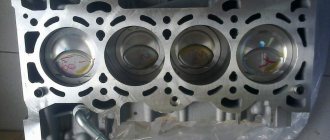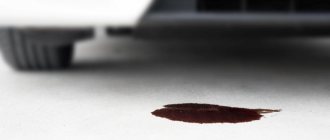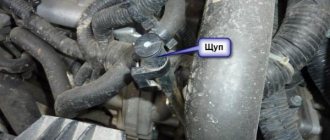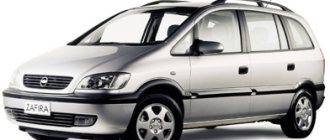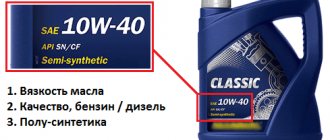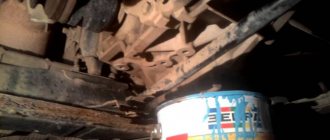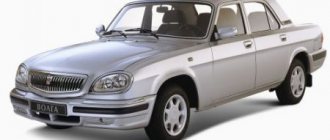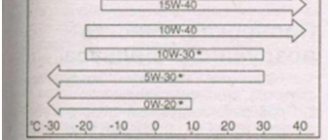The article will be in two parts -
General impression of operation and photographs of the run and what to expect during this run.
Useful information for you (which you won’t find in reviews or test drives).
In appearance, this is a clear leader in the class. And it’s not a matter of taste. It’s just a given. Everything is proportional, and it looks like a finished product.
- Speaking about the quality of interior materials, I will answer that it is present. And it is head and shoulders above the previous generation GH. If you try to shorten the thought and text. You will be satisfied with absolutely everything except sound insulation! But this does not mean that the car is a drum. Sound insulation is still present but at a lower level what you wanted
- Even the Germans will envy how it handles uneven surfaces and the performance of the suspension. But as for acoustic comfort, provided there are 17 discs, the level of sound insulation is sufficient (Camry or Accord level).
- If the Mazda is restyling 2 (here is the level of the Nissan Teana). But on 19 wheels with 225/45/19 tires, the noise is similar to the Kia Rio or the Chinese Lifan. For example, the Opel Astra J in terms of acoustic comfort will be head and shoulders above all of the above, including Teana. But this does not mean that it is better than these cars!
- But in terms of handling and the engine-box tandem, it is simply magnificent. When you sit down after 5 years, you get the same emotions!
- The rear row of seats is quite spacious - they also fold. Spacious trunk.
What you'll encounter:
1) The steering wheel will peel off and scratch easily (corrected in the latest restyling).
2) The mirror will no longer fold automatically (the fragile mechanism or gear breaks).
3) When you try to turn off the engine, the ignition and the entire electrical network will remain on (the P mode position limit switch is waiting for you).
4) If you have a car before 2015, your rear calipers will sour. Unless, of course, they have not yet been replaced under the recall. (Replacement under the recall is free).
5) When you turn the steering wheel, a creaking sound will appear, like on a rusty cart! And the mechanics will cross you on the steering rack. But this is not a rack at all (we’ll look at this problem later).
6) Again, on cars before 2015 there was a problem with the first track of the radio. Every time you will start from the first track and not remember the last position. (Cure by replacing the block).
7) At a mileage of 110-120 thousand kilometers, the front control arms assembly will need to be replaced. Or the ball and silent block will need to be re-pressed.
Average consumption is from 7.7 to 8.9. During this run, the generator tensioner pulley and its belt were replaced.
HOW MUCH OIL IS IN THE MAZDA 6 ENGINE
1st generation (2002 – 2007) (Mazda 6 GG)
The D-class car, presented in three bodies (sedan, hatchback and station wagon), was a huge success. Over four years of sales, by the time of restyling, more than a million copies traveled around the globe. It was a completely new car, superior to its predecessor in size, engine power, acceleration and fuel efficiency. The European exhaust gas standard has improved by two generations. The volume of the trunk and fuel tank has increased. The completely new appearance justified the idea of chief designer Yoichi Sato and was immediately recognizable. In 2006, restyling did not affect the exterior, but affected the interior trim; the engine also became a little more powerful, and the gearbox was six-speed manual and five-speed automatic.
Engines 1st generation (2002 – 2007)
Gasoline engines
- 1.8 MZR L813 (120 hp) - oil volume 4.3; approvals API SL/SM/SN, ACEA A3/A5
- 2.0 MZR LF17 (150 hp) - oil volume 4.3; approvals API SL/SM/SN, ACEA A3/A5
- 2.0 MZR LF18 (150 hp) - oil volume 4.3; approvals API SL/SM/SN, ACEA A3/A5
- 2.3 MZR L3C1 (165 hp) - oil volume 3.5; approvals API SL/SM/SN, ACEA A3/A5
- 2.3 MZR-DISI L3KG (260 hp) - oil volume 5.7; approvals API SL/SM/SN, ACEA A3/A5
Diesel engines
- 2.0 MZR – CD RF5C (120 – 135 hp) – oil volume 4.8; API CF, ACEA B3 approvals
- 2.0 MZR – CD RF7J (110 – 145 hp) – oil volume 4.8; API CF, ACEA B3 approvals
2nd generation (2007 – 2012) (Mazda 6 GH)
The second generation Mazda 6 looked sportier and more modern, losing 35 kg in weight. The new platform and extended wheelbase were complemented by increased dimensions. Gasoline consumption decreased by 1.5 liters. Compared to the first generation, body types remained the same. In 2010, restyling affected the appearance of the model, the color range of the body expanded, the optics and the front bumper changed, and the radiator grille was transformed. The suspension has become softer and more comfortable, and a six-speed automatic transmission has appeared. The design of the front seats has been updated, the upholstery has changed, the plastic has become softer.
Second generation engines (2007 – 2012)
Gasoline engines
- 1.8 MZR L813 (120 hp) - oil volume 4.3; approvals API SL/SM/SN, ACEA A3/A5
- 2.0 MZR LF17 (150 hp) - oil volume 4.3; approvals API SL/SM/SN, ACEA A3/A5
- 2.5 MZR L5-VE (170 hp) - oil volume 5.5; approvals API SL/SM/SN, ACEA A3/A5
Also read: Engine oil for Mazda Titan engine
Diesel engines
- 2.0 MZR – CD RF7J (110 – 145 hp) – oil volume 4.8; API CF, ACEA B3 approvals
- 2.2 VZR – CD R2AA (150 – 185 hp) – oil volume 4.7; API CF, ACEA B3 approvals
3rd generation (2012 – present) (Mazda 6 GJ)
Changes in the third generation affected mainly the body. The developers worked on aerodynamics, strength and lightness. The design school changed its philosophy to KODO, adding expressive lines. The dimensions have increased again compared to the previous generation, and the model has also become a little taller. The luggage opening has increased, the volume of the trunk itself has decreased, giving way to an expanded interior. The model has acquired a new set of SkyActiv technologies. In 2015, the restyling of the car again affected the exterior, the interior changed to a lesser extent. The 2021 restyling added i-Activsense driver assistance technology, changed the front and rear bumpers, optics, and wheel design. A new generation Mazda 6 is expected to be released in the near future.
Third generation engines (2012 – present)
Gasoline engines
- 2.0 PE-VPS (150 – 165 hp) — oil volume 4.2; approvals API SL/SM/SN, ACEA A3/A5
- 2.0 PEY5 (150 – 155 hp) — oil volume 4.2; approvals API SL/SM/SN, ACEA A3/A5
- 2.5 PY-VPS (185 – 195 hp) — oil volume 4.2; approvals API SL/SM/SN, ACEA A3/A5
- 2.5 PYY1 (192 hp) - oil volume 4.2; approvals API SL/SM/SN, ACEA A3/A5
Diesel engines
- 2.2 SH-VPTS (175 – 190 hp) - oil volume 5.8; API CF, ACEA B3 approvals
The engine-gearbox-handling combination is priceless.
The engines not only turned out to be reliable in this generation. But a real example of Japanese quality. Quite a thick timing chain. You can forget about the existence of it until a run of 300 thousand kilometers in 99% of cases. The engine does not die from detonation on our 95 gasoline (real 93 octane). And it only requires an oil change every 10-15 thousand kilometers. And a set of belts and the tensioner itself. Even the pump did not fail on runs for 200 thousand!
Mazda, they tried very hard to protect the engine from water hammer. Smart electronics cuts off your ignition. Until they are sure of the correct mixture. Tested personally. (more on this in detail ⬇️).
Yes, with 19 discs there is enough ground clearance even for such trips.
And such.
Driving to one godforsaken village, we discovered huge flooding after the rains. On the way back, we fell into a hole with water up to our headlights. And jumping out of it, we immediately found ourselves in the same one.
The car drove out and stalled. I thought, well, it’s all a water hammer.
We untwisted the air filter, it was all covered in water! I removed the hose, there were drops in the throttle valve. Fortunately, the new filter was in the trunk. I wiped the damper, let it settle and replaced the filter. When I pressed the ignition, nothing happened. The electronics do not turn the starter. Then I realized that this is protection from unwanted consequences. I removed the pipe from the throttle valve and left it with the hood open for a couple of hours so that the water would evaporate. After which the car started up as before. That’s what Japanese quality means.
An integral plus is the efficiency of these engines.
Trip to Gelendzhik: distance 1250 km, consumption was 5.5-6 liters. Overtaking trucks and a pace of 100-130 km/h. Over 2500 km of distance, exactly 7 thousand were spent on gasoline.
Even small car owners will be jealous of your fuel consumption.
Consumption on 2l engine:
- Route from 4.5 to 7l.
When driving 90-100 km/h on a cruise, the consumption is actually 4.5-5 liters. This is according to receipts.
At the usual pace for everyone, the consumption is 6.-6.5 liters.
- City of honest 8l all year round.
In summer it drops to 7.7.
In winter until 9.
- The 2.5 engine (192-194 hp) is also quite economical.
Automatic transmission:
It is reliable and everyone knows it! But how can this reliability be extended?
Do not make sudden accelerations or overtaking with a cold gearbox. This is one of the main points.
This box has a weak point in the input shaft bearing.
With measured operation, you will not even know about its existence. But for those who like to drive at maximum speed and close to it. Fly along the highway at 180-200 km/h, sooner or later it will make itself felt! You do not have a Nissan GTR. Just try observe the speed limit or a little higher. And the transmission covers more than 300 thousand km. Yes, it really goes that long. And there have been such runs for a long time. (I come across it on the occasion of work).
Don’t forget about changing the oil and filter and cleaning the magnet. Solenoids don’t like dirty oil. And don’t be lazy to check the level! With the car running, the selector knob in N-oil mode should be strictly in the middle of the marks.
At this mileage, the front hub (right) is often replaced. I was no exception - replacement at 89,000 thousand kilometers.
She didn't bother me anymore.
During this run, a wild creaking sound appeared when turning the steering wheel. The reason for this was the lower ball joints!
If you hear the creaking of a rusty cart. At even the slightest turn of the steering wheel. Order the lower ball front control arms immediately (part code 51282).
To prevent the squeak from returning, order a protective bracket for the ball joints. It will protect against water getting into the ball joint. (Part code KB7W-34-552)
By this mileage, the steering tips and silent blocks of the same levers may need to be replaced.
At this run, the struts required replacement. And the rear pads were replaced (at the same time as the front ones).
When replacing struts, do not install the original boot. (They often tear)
Place the dust cover from the Mazda CX-7 - code in the photo⬇️
L20634015A
Another feature that you will probably come across.
If the drainage holes on the windshield and behind the front driver's fender become very clogged. After a good rain, you will see a wet driver's mat!
This problem was relevant on the GG body.
We remove the driver's side fender liner and rake out the leaves and dirt. And of course, clear the drainage holes of debris.
That's all for major repair work. For almost 5 years of operation, only oil and filter.
The mileage is approaching 130 thousand of heavy use! (bad roads/very bad roads/active driving/19 rims). The rear suspension is untouched and in practice goes well beyond 200 thousand km.
Addition:
The mileage has reached 134 thousand and no problems have been found. The attachment belt has not yet been changed and is in good condition.
FORUM RULES
Please note that when using the forum you must comply with the restrictions on adding Content given in paragraph
7
Terms of use. To clarify and supplement such restrictions, the Manager has introduced the following Additional conditions for using the forum:
- 1. On the forum it is PROHIBITED: a. Post advertisements for purchase, sale or exchange
- b. Direct advertising
- c. Knowingly publishing incorrect content
- d. Cursing, swearing and “screaming”, i.e. writing words in capital letters
- e. Gross violation of Russian grammar rules
- f. Conversation off topic
- g. Post messages under different names on the same topic
- h. Acting on behalf of another person
- i. Repeat messages and topics
What kind of oil needs to be filled
Original
With the change of generations, the requirements and tolerances of motor oil have changed. This is due to changes in engine development. The parameters recommended by the manufacturer indicate the following tolerances and characteristics.
Mazda 6 GG (2002 – 2007)
gasoline engines:
DEXELIA Mazda, API SL approvals, viscosity 5W – 30 (temperature range from – 300C to + 400C), oil classes ACEA A3/A5;
diesel engines:
DEXELIA Mazda, API CF approvals, viscosity 5W – 30, oil class ACEA B3.
Mazda 6 GH (2007 – 2012)
gasoline engines:
DEXELIA Mazda, API SL approvals, viscosity 5W – 30 (temperature range from – 300С to + 400С), 5W – 20 (temperature range from – 300С to + 270С), 10W – 40 (temperature range from – 250С to + 420С), oil classes ACEA A3/A5;
Also read: Engine oil for Mazda 6 GH engine
diesel engines:
DEXELIA Mazda, API CF approvals, viscosity 5W – 30, oil class ACEA B3.
Mazda 6 GJ (2012 – present)
petrol engines SkyActyv:
Mazda Original Oil Supra, API SN approvals, viscosity 0W – 20 (temperature range from – 350С to + 350С), oil classes ACEA A3/A5; and Mazda Original oil Ultra, API SL approvals, 5W – 30 (temperature range from – 300C to + 270C), ACEA oil classes A3/A5;
diesel engines:
Mazda Original Oil Supra DPF, API CF approvals, viscosity 0w - 30 (temperature range from - 350C to + 350C), oil class ACEA C3; and Mazda Original Oil Supra DPF, API CF approvals, viscosity 5w - 30 (temperature range from - 300C to + 400C), oil class ACEA C3.
Analogs
An analogue for the first and second generations of Mazda 6 GG and Mazda 6 GH can be considered:
- MOBIL 1 ESP 5W-30 – synthetic motor oil, API SN class, ACEA C2, C3 class for gasoline engines;
- MOBIL 1 X1 5W-30 – synthetic motor oil, API SN class, ACEA class A1/B1, A5/B5 for gasoline or diesel engines;
- Shell Helix HX8 A5B5 5W-30 – synthetic motor oil, API SN class, ACEA A5/B5 for gasoline or diesel engines;
- Shell Helix Ultra ECT C3 5W-30 – synthetic motor oil, API SN class, ACEA C3 for gasoline or diesel engines;
- ZIC TOP 5W-30 – synthetic motor oil, API SN class, ACEA C3 class for gasoline or diesel engines;
An analogue for the third generation Mazda 6 GJ could be:
- ZIC X7 FE 0W-30 – synthetic motor oil, API class SN PLUS, SN-RC, for gasoline engines;
- LIQUI MOLI Molygen New Generation 0W-20 – synthetic motor oil, API SN PLUS class, for gasoline engines;
- LIQUI MOLI Synthoil Longtime 0W-30 – synthetic motor oil, class API SM, ACEA: A3/B4, for gasoline engines;
- Mobil 1 Esp X2 0w20 is a synthetic motor oil, API SN class, ACEA A1/B1/C5, for gasoline or diesel engines.
